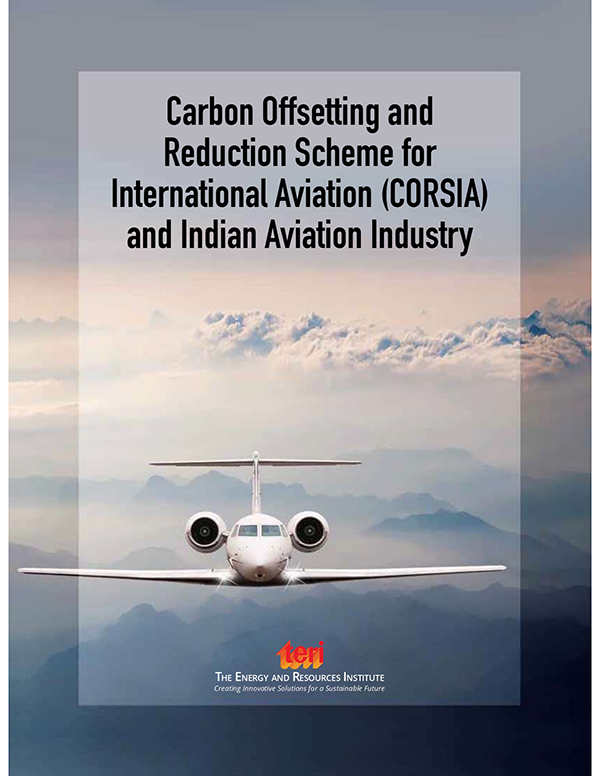Carbon Offsetting and Reduction Scheme for International Aviation (CORSIA) and Indian Aviation Industry
The Indian aviation market is on a high growth trajectory. This growth will eventually lead to a significant environmental challenge, the most important being the increase in GHG emissions. Based on the current emissions, India’s airline industry is projected to emit around 50 million tonne of CO2 in 2035 (domestic and international) at 5% annual emissions growth rate. Remarkably, this number is equivalent to the current emissions of the United States sourcing from international operations alone. Within the total share of emissions projected for the Indian aviation industry in 2035, 24.4% (around 12.2 million tonne) will come from international operations. This sector has been experiencing an explosive growth in the country, providing huge market potential and opportunities for new entrants. However, with the onset of ICAO’s CORSIA, there can be adverse fallout on the growth of the international component of the existing and new carriers. Based on the current analysis, it is estimated that in the second phase, CORSIA would impose high financial costs on Indian carriers,e.g. Air India, Indigo and SpiceJet, which have international operations. The costs in terms of offsets for the three operators could vary in the range of INR 1998 to 10018 crore1 (on average INR 666 and 3334 crore per annum at USD10 and USD50 price unit) between 2025 and 2037if 5% growth rate in emissions takes place. If the operations grow and emissions increase at 8% per annum, the offset costs could range from INR 3592 to 18009 crore2 (on average INR 1197 and 6003 crore per annum at USD10 and USD50 price unit)between 2025 and 2037 for all the airlines put together.
The cost can impose a constraint on the growth of international operations for Indian carriers and aviation industry, unless suitably moderated or addressed. As the progress to reduce emissions globally is slow, the cost of mitigating global emissions from the aviation sector is anticipated to be high. To overcome these challenges and reduce the financial burden, the Indian aviation industry will have to rely on the options of offsetting the emissions in the domestic or international carbon market, and/or promoting the use of biofuels or low carbon fuels.
It is important for the stakeholders of the aviation industry to urgently evolve solutions to the impending freeze on their growing emissions (compared with 2019). Amongst the possible actions is a range of measures covering improvements in energy efficiency, fuel efficiency, and switch to alternative fuels. While many of these are already part of a Whitepaper on National Green Aviation Policy, the new interventions could include creation of a market trading facility in emissions, and increased use of low carbon sustainable aviation fuels.
Emissions reduction credits generated in other sectors of economy can be made available to the operators. The existing domestic energy related markets in India can become the starting point for the development of a domestic emissions trading system if the relevant regulations are tweaked. Further, the use of Sustainable Aviation Fuel (SAF) can help the industry meet a substantial part of its fuel need if adequate policy initiatives are taken in time. SAF will require ramping up of efforts for its production and commercialization and making it available on scale to the Indian airline operators to enable them to reduce or offset their emissions in the second phase of the CORSIA (2027–2035).
The government needs to prepare a clear action plan to identify and roll out these measures with a view to prepare the industry to meet the emerging challenge sufficiently and adequately before 2025.

